
The illustrator who has been fascinated in “shapes” of Tokyo
*本記事は、下記記事の英語版です。日本語版はこちらまで。
Foreigner working in Japan? And freelance?? Wow, that sounds like a challenge. So, there should be several reason to reach here. Let's hear the process from him.
Andrew Joyce is a British illustrator currently living in Japan. His work includes cityscapes, maps, hand-drawn lettering and observational illustration. Not only in Japan, but also he has several clients from UK or other European countries, such as UNIQLO, MUJI, Meiji Milk Products, ELLE magazine….etc.
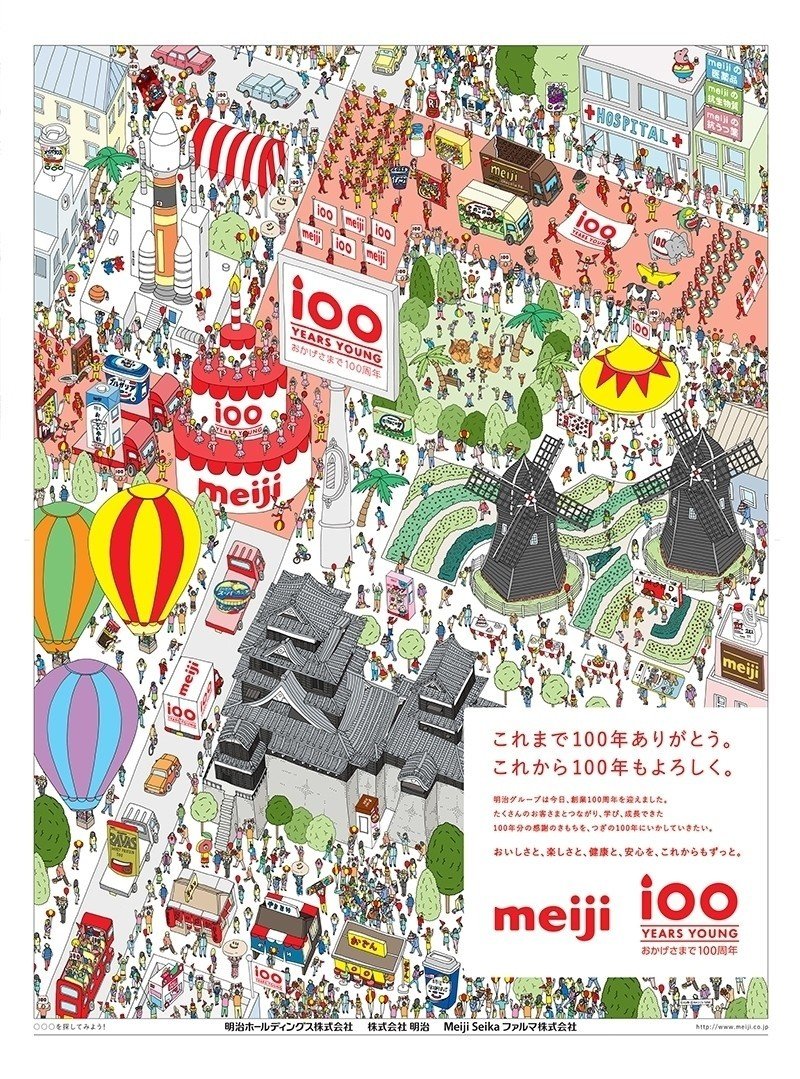
So, what kind of process had brought him working as an illustrator in Japan? It seems like a unique educational system in UK enabled his trip as a “wanderer”. During his trip, Tokyo attracted him strongly, and he drifted to Tokyo. Let’s hear his story.
-From When are you living in Japan?
I moved to Japan around 2011, after married with my Japanese wife. After I graduated the university, we got married in UK in 2010. The economy was really bad at that time, no job, everything got more expensive… We didn’t know whether if we should live in London or Tokyo. But we knew that to live in London costs 3 or 4 times expensive than to live in Tokyo. My illustration work was not quite full time yet so it was kind of a risk to come to Tokyo. But reality that I needed money, career, so we had to move forward. At that time the answer for us was Japan. It was going to be easier path to move forward, it was a right choice to make.
When I moved in, I was doing English teacher for 2 years, and slowly I was getting jobs from UK, and also Japan.
Building Relationships with new clients in Tokyo
-So, the illustration was not your full-time work at first.
No. My wife is Japanese so I didn’t have problem for visa, but I wanted to make sure I have enough money. So I did full time job teaching English, and I did my drawing works in break time or after I come home or before work…. busy time. And then, my illustration became busier, so I changed my English teaching to part time job … and eventually I stopped and focused on illustration.
-How did you get your works in Tokyo?
From UK, some of the jobs came regularly but since I moved, I was trying to get started again in Japan. So I was trying to enter many community in Japan and get to know people, give my name cards, meet new clients and give my portfolio...etc. Now I am very lucky I have my regular works, so I don’t really show my work as much anymore. I think the important thing is to “be online”, always having a presence. Then, clients will be able to see my works over time, people will see my work and remember it.

-Where are you from?
I am from UK. I was born in Wales. My father was in RAF (Royal Air Force), so we moved every 2 years, so I have lived in Ireland, Scotland and Wales...etc. Everytime my family move, I went to new schools, make new friends… so I was always moving.
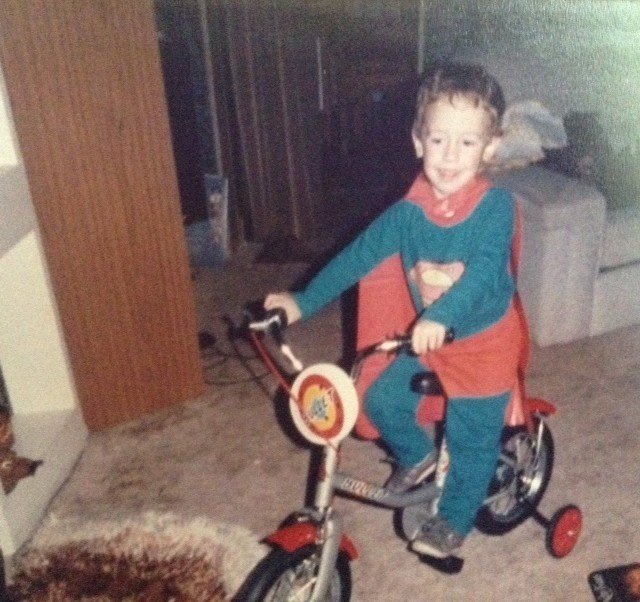
-So you were always moving since you were a child?
Yes, I was. So I don’t really have a hometown, but I call myself “Welsh”, rather than “English”.
Took a long trip before entering university
-Could you tell me the process before reaching Japan?
Actually, the educational system in England is quite different from Japan. In my case, 5-11 years old I went to preschool, 11-16 years old I went to high school, and 16-18 years old I went to college. During high school, we do everything, English, French, mathematics, German…. all those things. And in college we decide on maybe 2 or 3 things depending on each interest, which is closer to vocational education. You can stop or change, its kind of flexible, and I decided to do art and design for college. After graduating it, people go to university, and do one subject for 3 years. However, when you leave college in England, its kind of a tradition to take one year out. So for example, you can apply for university and get accepted, and you can tell the university to wait for a year. In that year, you can work, just get some money or you can travel. They usually push people to see the world and experience, learn different culture and come back and focus on their work.
-That’s a great system!
Yes. So for me I did that, but I traveld out for 5 years...haha.
-Wow, 5 years!? That’s a quite long trip!
I kept traveling around Europe for first 2 years, meanwhile I had different jobs, such as making tents for holiday people in campsites. Then I traveled even more to Australia, worked in a hostel, and to Japan, taught English.
-So that was the first time you came to Japan. What brought you here?
In England there is a travel shop for young travelers, and there you can choose where you want to go out of 10 countries, and they specialize in 1 year around-the-world tour. So once I went to the shop, they asked me where I want to go, but I really didn’t matter where to go at that time, so I told them, “You choose.” And they said, “Okay, how about Japan?” so I said “Okay!”
-So the travel shop decided to come to Japan instead of you?!
Yes, so it was completely random. But then since I came to Japan, I really loved it, and I was kind of obsessed for a while. It was very comfortable and very easy to travel. Everything was new to me, including food.... like okonomiyaki, yakitori, yakiniku. I once was obsessed to sashimi, so I couldn’t stop eating it everyday.
So I ended up loving Japan. Since then, after going back to England, I try to save some money to next travel, and in between I went to Japan many times.

-What part of Japan fascinated you so strongly?
I love Japan, including countryside, but for me it was always “Tokyo”. Lifestyle in Tokyo is great. I like vending machines... and in summer time you can walk around the streets in short pants and Tshirts even at the night time, which you cannot do in England.
I remember drinking “Pocari sweat” for the first time. When I drink Pocari sweat I always have this memory from traveling for the first time and feel “なつかしい(natsukashii)”. It's weird for me I have all these natsukashii moment of places.
Tokyo is the place you can walk around and explore and go down the street and you can find sushi shop or izakaya… you can be curious and find place and find new food, new drink… everyday you find something new. I think it happens to many foreigners, they love it and then they move here. However at the same time,we can find something kind of similar.
-So Japan is full of new things but not too exotic? What do you feel something similar?
I think people in Ireland or UK, culture personality is quite similar to Japan. We are quite shy, both people. A lot of stuff inside, rather than pop out, personality is more in than out?
One day I learned “Aimai” in university, as an unique Japanese style of expression, however I think we have that in UK as well, and I knew exactly what we were talking about. So for me it was kind of comfortable way to live here. We also are both Island nations, and have lots of fishing villages, therefore food traditions are somehow the same… so having such things in common, I didn’t have to change my style so much.

-So 5 years after graduating college, you finally entered university in UK?
Yes. When I was traveling I didn’t know what I want to do in my future. However, when I was bored during my trip, I had been looking and thinking about designs, or watched typographies. I also was drawing a lot in my sketchbook. I would buy magazine and see the drawing or photo, and I would do the drawing for that magazine just for fun. I actually didn’t know if I want to be an illustrator at that time. I didn’t even know if its a job, but I was kind of doing illustration work already, without realizing it. When I realized this is a job, Okay, I will do that. and everything make sense. That was when I got back to the university in England.
-So you majored in Designs and Illustration?
In my 1st year, I majored in graphic communication, such as design, photography, animations, filmmaking. Then the 2nd year I focused on just illustration, but during my 2nd year, I came to Japan and went to Japanese university in Chiba for graphic design. I majored in Graphic design and Japanese language.
Then, after graduating university, I worked part time, and also tried to be an illustrator, sending emails or portfolios to people… I did everything. And luckily I get to join my current Agency “Handsome Frank” in UK pretty soon.
-Then you got married, and get to move to Japan…and story rolls. Again I am amazed how you built a new illustration network in Japan!
I think it’s just a matter of “Keep going”. After you finish my university, when you have no clients or didn’t know what you can do… you might have a job you hate. But then overtime, you get one client and you get two. Maybe one client comes back and overtime and you get busier, and your potfolio gets better and bigger…
In my class of illustration there were about 15 students, but I say there’s only 2 out of them who are still illustrating. I think it’s because maybe that people just kept going, didn’t get another job or choose another career… they just kept. For me, I just didn’t have plan B. Even if it’s difficult, I just kept on going. Those are the people that can be bigger, and eventually become illustrators… Just keep going, and make it. my theory.
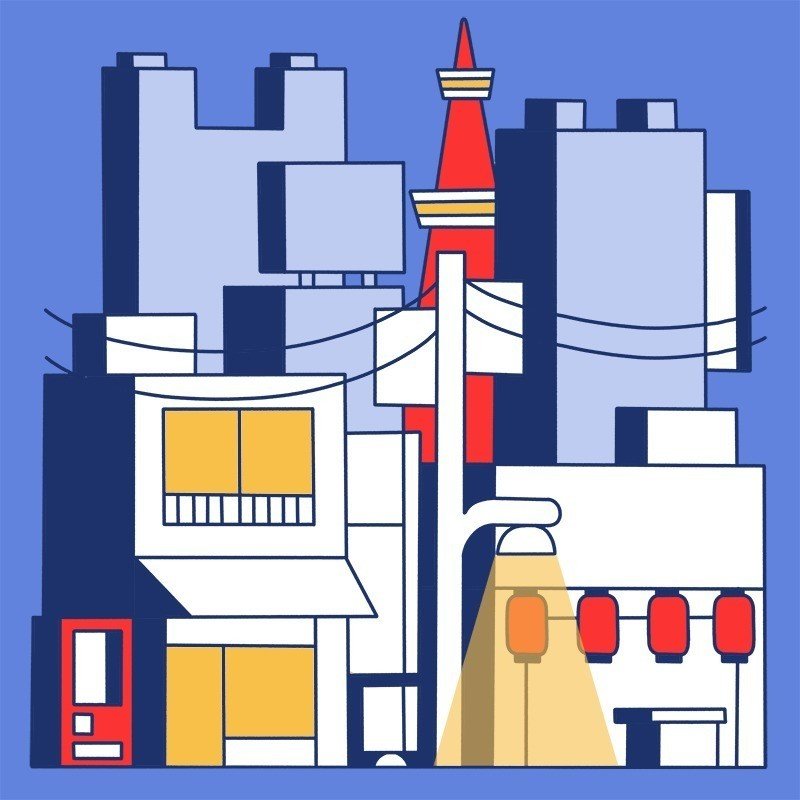
-By the way, today we came to this coffee stand, “SLOPE” in Kami-Igusa station.
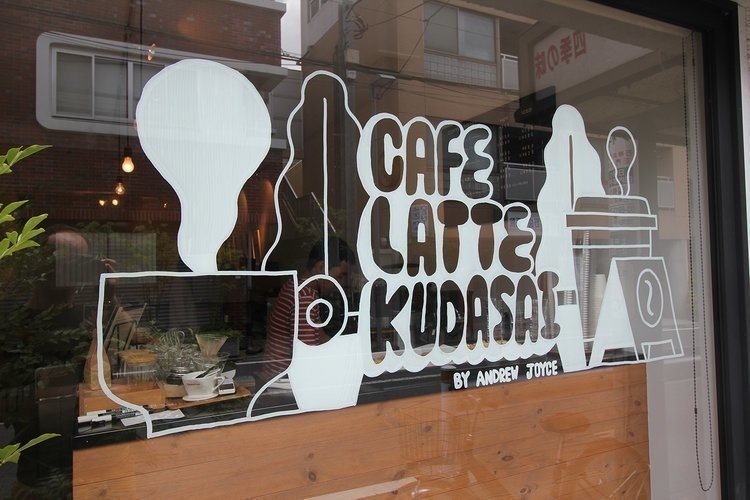

(You can see his paintings on the window if you are lucky)
Actually, this is where we have met and get to know each other. In 2013, I, as a hanko stamp creator, was holding a workshop on this coffee shop. Then, Andrew-san and his wife came to join to make a stamp together. So yes, I was his “hanko sensei (teacher)”! Haha.
Since then, Andrew-san joined my workshop several times. His works are always nice, since his designs are always simple and clear, and turns out to be a great stamp.

(hanko stamps made by: Andrew Joyce)
-Why did you draw lots of “cityscapes”?
When I came to Japan, I was fascinated how Japan is… that there are no space. When you ride on a train, you can see the view with so many things in small spaces. I grew up in countryside with lots of space. So I was just fascinated in shapes, how everything is put in to small spaces in Tokyo. It looked like a lego or something.
-And the cityscapes eventually became one of your work?
Since then, after I got back to my university in England, I kept on drawing the cityscapes and buildings of Tokyo. Then I graduated and thought of how I can make money out of drawing this building. And the answer was, “Okay, maps.” Clients always need maps, and I remembered someone telling me, if you can draw maps you will always have work. And it was true! I used to spend hours on Roppongi hills or Tokyo Tower, studying and seeing people move and trains…and sometimes even now. Japan is like a piece of miniature, and I really love it.
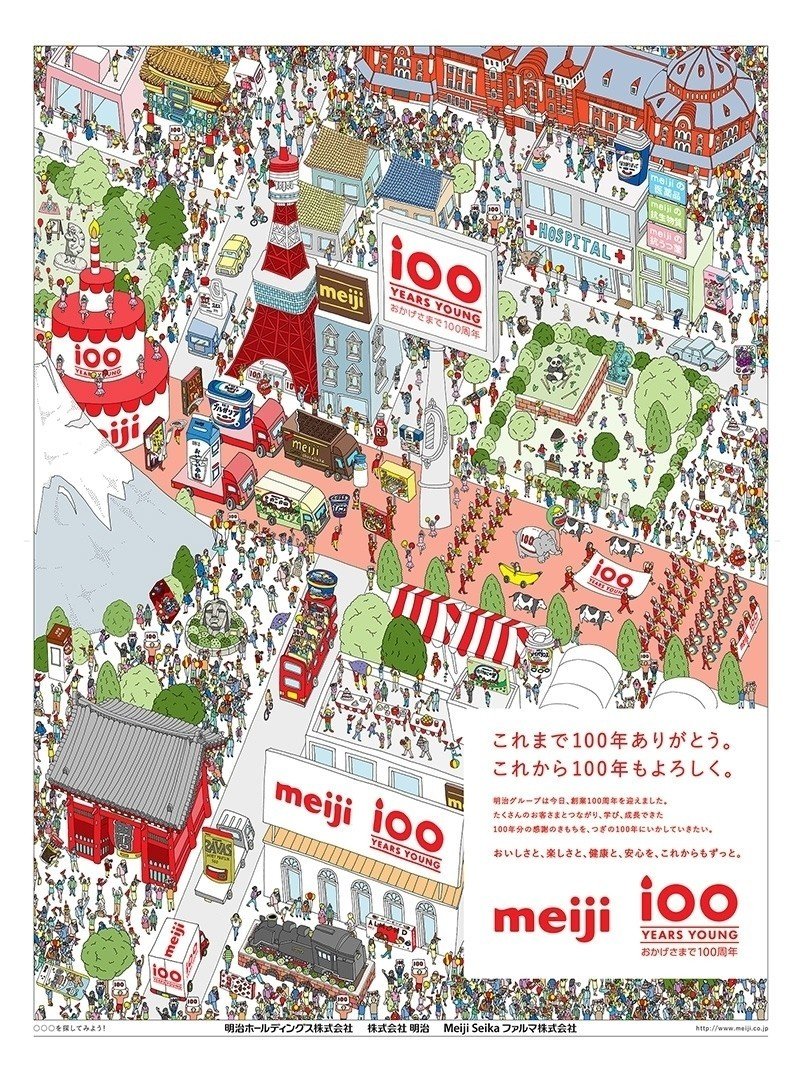
-Did you have any changes during your career?
Fortunately, I got many jobs for this past few years, but somehow I felt I was doing in a same style over and over again. I was disappointed a bit, and went back thinking, what do I like to draw? Why I like drawing? And one day I looked my sketch book and my portfolio, and they were completely different. In other words, while I was doing lots of my client work, my interest or style had been changed gradually in this few years.
-How did it change?
I used to draw on paper by pen, but now I draw mostly in iPad Pro, and draw everything in digital. But I still hand draw them. Now I like finding shapes, rather than making the motif to be too realistic. I get rid of things, and trying to make it more and more simple. Just two lines, and that’s perfect. That’s what I find interesting now.

-So you are now focusing on “shapes” than before. Any other changes?
I am changing my process as well. I used to start any project, having a finished idea to everything, like A to Z. So it was like, when I have an idea of “Z” as a final product, I started out making “A”. Now, when I find something interesting, I just draw. Without thinking about “Z”, I just start with “A”, then go to “A” to “B”, and then go to “B” to “C”… and then have all these drawings and see how can I make something from these drawings. If it’s a book, it’s a book! Screenprint, then screenprint. So now I feel it is more natural process, and it’s more free. Sometimes I talk about this and sound so stupid and sound “art” talk. But I felt this change the process like this might be more fun.

For example, this is my sketch book works while I was hiking. I want to make this into hanko stamp, and it’s fun to think of what this turns out to be.

Just start drawing, and create something out - Turning out to be a more collaborative process
-How did such change influenced your client works?
Well, I have regular clients, I have agents, I joined agency with a particular style, it can be difficult to say, I don’t wanna do this anymore I want to do this. However, sometimes at client meeting, they usually give lots of information and I have to visualize it. It’s fun, but it may sometimes work better if I can work like the way I feel now… just keep drawing the images and then decide what products to make. It can be more creative and collaborative. I don’t want to be too strong with my opinion, for example if I want to use red but clients say green, then yes, maybe we can deal with green. That’s part of the process. So that’s what I am trying to do now. That was all the thing I was thinking last year.
-So you want to eventually shift to such style?
Yes, I am learning with every project, I have to take a slow process towards that. I think what is interesting about illustrators or any other creative jobs, is that we can change following our own interests. In normal job, if you get bored to that job and then you have to do maybe other 20 years. But for us we can change it. I think we can’t be scared to change things, otherwise we will be stuck to do the same thing.
-You are working on several projects in Japan?
“The Tokyoiter” is one of my project I work on with other illustrators. In a respect to traditional cover art of “The New Yorker” and “The Parisianer”, we are working on this “The Tokyoiter”. We ask illustrators to make a cover art out of anything what they like about Tokyo. It can be people, food, habit…. can be anything. We make exhibitions in Tokyo, and actually we have one coming up in Paris. The member can either be Japanese or foreigners, living in Tokyo or haved lived in Tokyo.
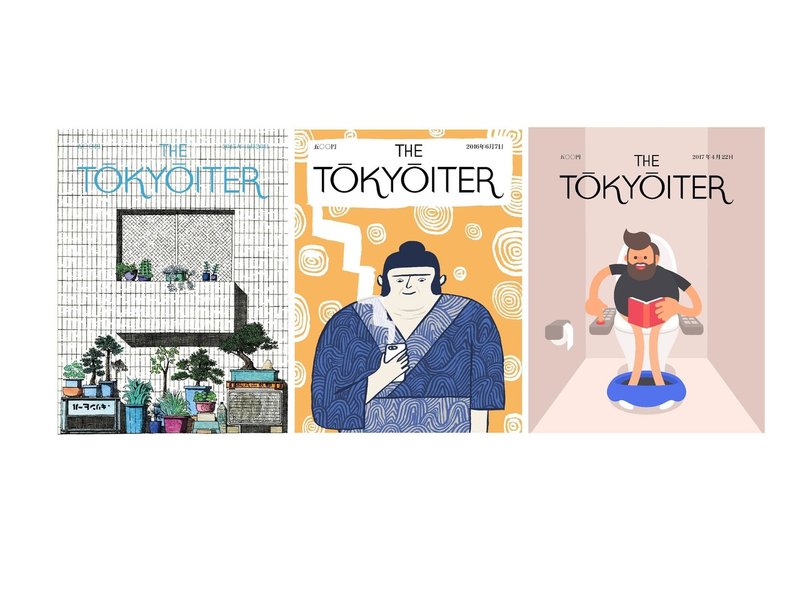
-What influenced you?
Since being in Japan, I see many of children’s books. I don’t want to make them, but now that I have a child and I look at these books, and I find those books use colors and simplified images really well. They are very clever to entertain children not to get bored. They are just like a really nice and very inspiring for me. I want to get inspired from something outside of what I do.
-What do you want to do next?
I am trying to explore tokyo more, so I would go to new place in Tokyo often. Find something interesting and find something new. I’m not trying to think of the output, don’t know yet, just draw, and just for fun… and I can do that with my iPad or macbook. I see something cool and draw draw… As a freelance, I can work anywhere, and it was cool to do that. But now I am changing now I want to work in studio...
-Personally, I love your project “Japanese Words Illustrated”. Please keep it going on that!

Thank you.
Andrew Joyce
Born in Wales, 1983. British illustrator living in Tokyo.
Co-founder of the project “The Tokyoiter” and “Japanese Words Illustrated”. You can enjoy his GIF animations on instagram!
Interviewed by: Hanko stamp creator Sakuya Amano, "Sakuhanjyo".
With the strong interest towards what people really "likes", sakuhanjyo likes to make and create, write & interview.
『スキ』をしていただくとあなたにおすすめのチェコをランダムにお知らせします。 サポートいただいたお金は、チェコ共和国ではんこの旅をするための貯金にあてさせていただきます。
